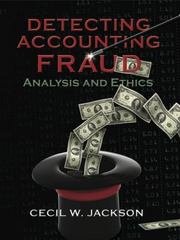Question
Tas Machinery manufactures two products, basic and superior, and applies overhead on the basis of direct labour hours. Anticipated overhead and direct labour time for
Tas Machinery manufactures two products, basic and superior, and applies overhead on the basis of direct labour hours. Anticipated overhead and direct labour time for the upcoming accounting period are $960000 and 25000 hours, respectively. Information about the company's products follows:
Baslc:
Estimated product volume 3000 units
Direct material cost $25 per unitDirect IlIhour per Ilnit
Direct labour per unit 3 hours at $12 per hour
Superlor:
Estimated product volume 4000 units
Direct material cost $40 per unit
Direct IlIhour per unit 4 hours at $12 per hour
Tas Machinery's overhead of $960000 can be identified with three major activities: order processing ($180000), machine processing ($672000) and product inspection ($108000). These activities are driven by number of orders processed, machine hours worked and inspection hours, respectively. Data relevant to these activities follow:
Order processed Machlne hours worked Inspectlon hours
Basic 330 19800 2200
Superior 220 24200 8800
Total 550 44000 11000
Top management is very concerned about declining profitability despite a healthy increase in sales volume. The decrease in profit is especially puzzling because the company recently undertook a massive plant renovation during which new, highly automated machinery was installed- machinery that was expected to produce significant operating efficiencies.
Q:
1. Assuming use of direct labour hours to apply overhead to production, calculate the unit manufacturing costs of the basic and superior products if the expected manufacturing volume is attained.
2. Assuming use of activity-based costing, calculate the unit manufacturing costs ofthe basic and superior if the expected manufacturing volume is attained.
3. Tas Machinery's selling prices are based heavily on cost. (a) Using direct labour hours as an application base, which product is overcosted and which product is undercosted? Calculate the amount of the cost distortion for each product. (b) Is it possible that overcosting and undercosting (i.e. cost distortion) and the subsequent determination of selling prices are contributing to the company's profit woes? Explain.
Step by Step Solution
There are 3 Steps involved in it
Step: 1

Get Instant Access to Expert-Tailored Solutions
See step-by-step solutions with expert insights and AI powered tools for academic success
Step: 2

Step: 3

Ace Your Homework with AI
Get the answers you need in no time with our AI-driven, step-by-step assistance
Get Started


